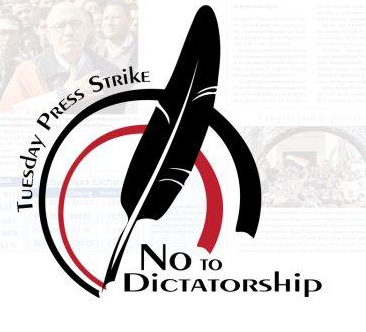CAIRO: Tahrir Square was one of the 10 most dangerous places for journalists in 2011, a year that saw 66 journalists killed worldwide, 20 of whom while covering Arab uprisings, Reporters Without Borders (RSF) said Thursday.
The 10 places “represent extreme cases of censorship of the media and violence against those who tried to provide freely and independently reported news and information.”
The list included Manama in Bahrain, Change Square in Sanaa, Yemen, Misrata in Libya and several cities in Syria. It also included cities in Somalia, Côte d’Ivoire, Mexico, Philippines and Pakistan.
In Tahrir Square, “foreign journalists were systematically attacked during the incredibly violent first week of February, when an all-out hate campaign was waged against the international media from Feb. 2 to 5,” RSF said. “More than 200 violations were reported.
“Local journalists were also targeted. The scenario was similar six months later — from Nov. 19 to 28, in the run-up to parliamentary elections, and during the weekend of Dec. 17-18 — during the crackdown on new demonstrations to demand the departure of the Supreme Council of the Armed Forces.”
In Cairo, the Committee to Protect Journalists (CPJ) documented a number of violations where the army crackdown on productions companies such as Cairo News Company (CNC) and news crews like Al Jazeera or CBC in Ismailia Hotel in Tahrir square last Saturday.
CPJ, which has only confirmed 43 journalist deaths related to their work, said 16 were killed while on “dangerous assignments, many of them while covering the chaotic and violent confrontations between authorities and protesters during the uprisings that swept the Arab world.”
Crackdowns in Cairo included military detention of local and international journalists, beating them with batons and confiscating their equipment.
CPJ identified Egypt’s Ahmed Mohamed Mahmoud who was gunned down while filming a protest in Cairo this year.
“Journalists working in this environment are in no less danger than war correspondents covering an armed conflict,” CPJ quoted Ahmed Tarek, a reporter for the Middle East News Agency who was assaulted by police while covering protests in Alexandria.
He added that the greatest danger journalists are facing today in post-revolution Arab countries is the targeting of journalists by political forces hostile to anyone who exposes them.
RSF said statistics of assault on journalists were higher than those recorded in 2010 due to the Arab spring protest movements that inspired demonstrations in other countries, adding that the number of arrests also rose to 1,044 in 2011 from 535 in 2010.
The group said that 1,959 journalists worldwide were physically attacked or threatened, 499 media censored, 71 journalists kidnapped, 73 journalists fled their country, 5 netizens killed,199 bloggers and netizens arrested, 62 bloggers and netizens physically attacked, and 68 countries were subjected to internet censorship.
CPJ said that journalists worldwide die at high rates while covering protests, which make photographers, freelancers and netizens also vulnerable.
RSF said 20 journalists were killed in Latin America due to criminal violence, while other journalists also met the same fate in Pakistan due to political turmoil.
Pakistan was found to be the deadliest for journalists the second year in a row with 10 killed in 2010.
China, Iran and Eritrea remained the biggest prisons for the media, the group said, without specifying the number of journalists detained there.
According to RSF, this year saw a 16 percent increase in journalist deaths. Last year, 57 journalists were killed for their work the world over. The highest death toll of journalists in the past decade was 2007, due to the war in Iraq that pushed the global toll up to 87.


